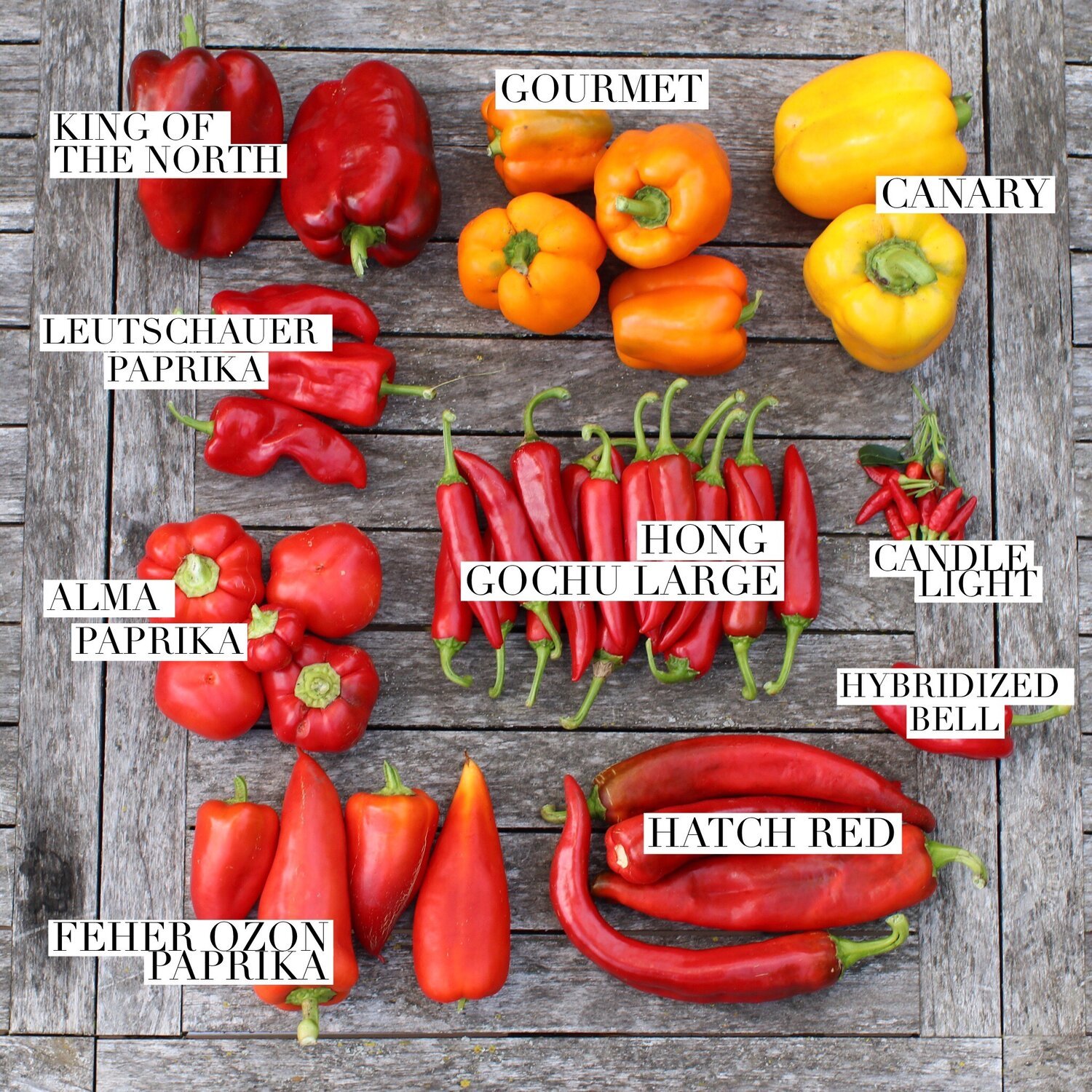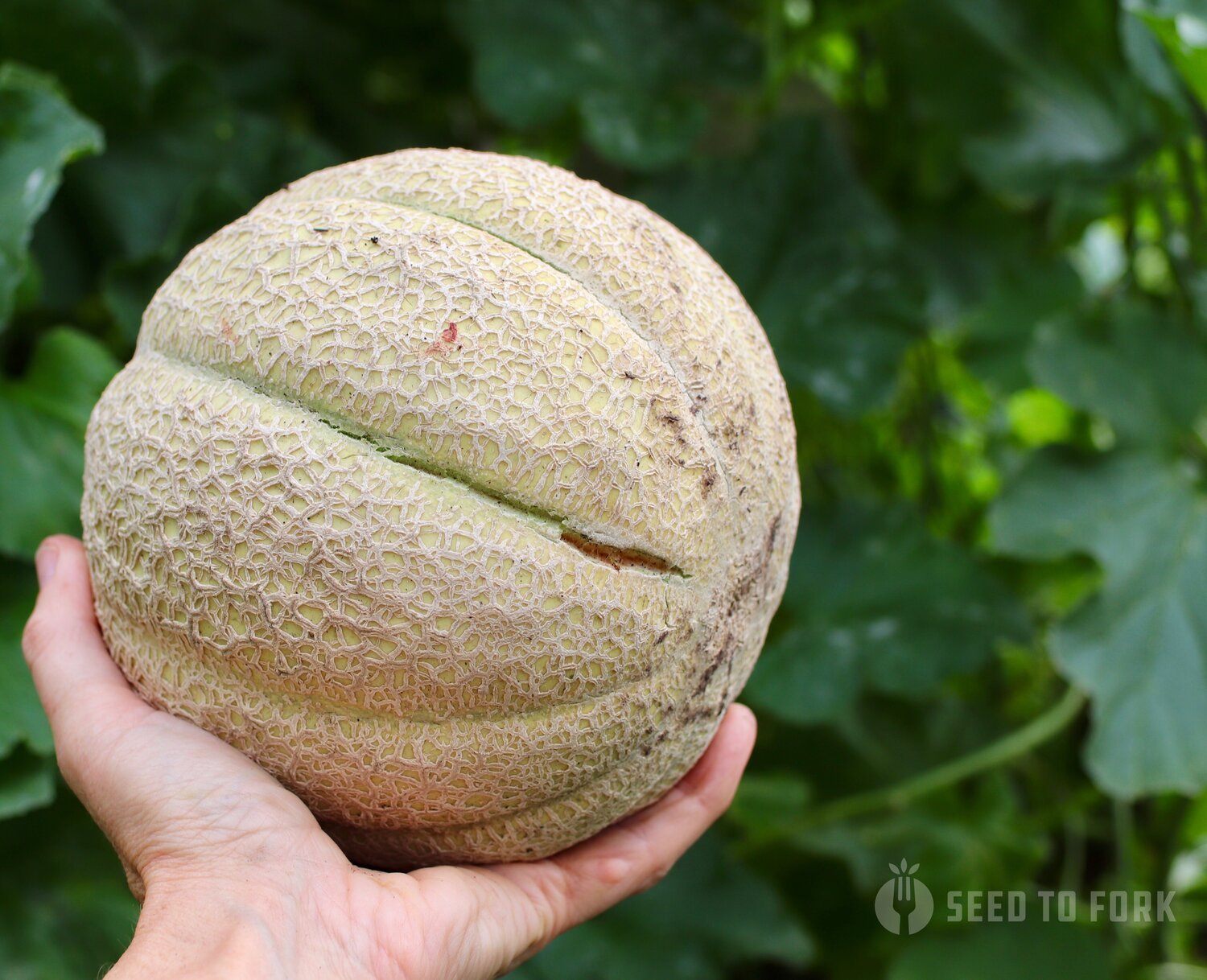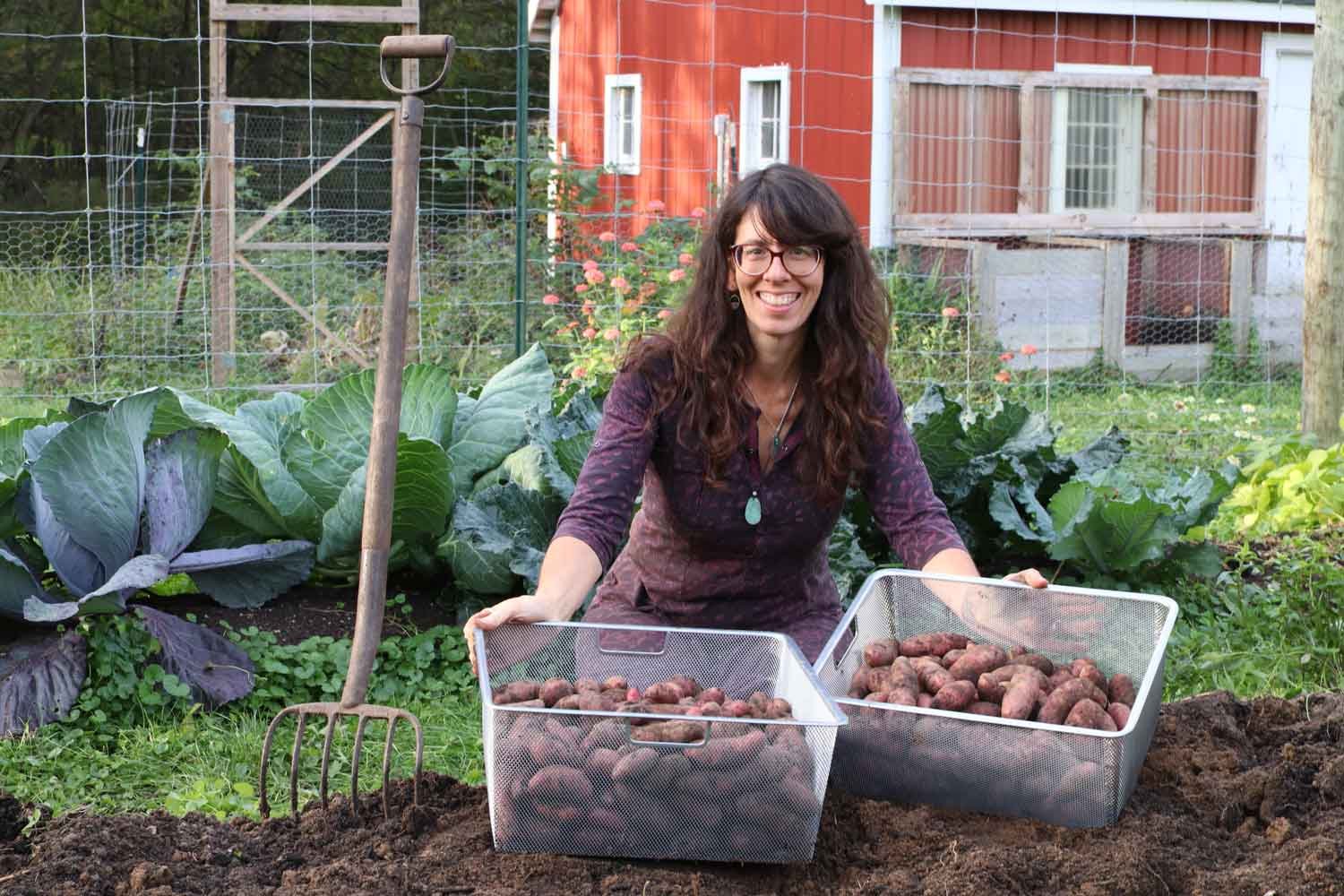2019 Garden in Review
I am eternally amazed at how each growing season offers subtle lessons and blatant reminders of how we missed our target in often equal proportions. I remain humbled reflecting on what we achieved and where we lost our way growing our own food this year, with some of the planning and execution always slipping away from me come mid- to late-August, a time when we are inundated with produce, preparing for back to school, and honestly looking forward to our first frost, quietly relishing the imminent slow down.
Never Enough Salads
You’d think that after decades of growing food, I’d have gotten growing greens down to a refined science like I have my beloved brassicas. The truth is, I tend to plant too much all at once, and then there’s so much I don’t succession plant as much as I should or could.
Because I prefer to sow lettuce indoors and transplant, my goal for next year is to start lettuce over a longer period of time, less than half a dozen soil blocks per planting — and sow our iceberg and romaine lettuce indoors two weeks earlier (early March) for an early to mid-April transplanting under row cover.
In spring we tend to have our lettuce fix just right; I sow a few indoor successions of about 25 different heads, and with varying strength of seedlings they become more than one succession out in the field, the strongest starts maturing faster than the smaller ones. It sort of works itself out as the season warms up, with plenty to eat and more than enough to share.
Come Summer, though, that’s when growing greens becomes a challenge for me mentally. And it also becomes challenging because lettuce goes to seed (bolts) very quickly in the heat. To ameliorate this issue, last Summer I invested in a few heat tolerant lettuce varieties, which I sowed indoors in late June and transplanted out in late July. They did so well, and it was a wonderful reminder at just how much faster things grow when the soil is warm and the days long; we had harvestable lettuce in less than two months time.
In 2020 I will do much smaller sowings weekly starting in mid-June through mid-August. Yes, weekly sowings for about 8 weeks sounds, well, a bit onerous to me, too, but we love our spring, summer, and fall salads, so here’s to planting stamina.
Fall Brassicas
This is an area where I have spent several years exploring and experimenting, in large part because growing cabbage takes several months, and more practically because we consume a lot of cabbage, and by a lot I mean daily. And a food like cabbage is not something you can remember in late Summer and grow successfully from seed before Winter blows in; you have to think and act several months in advance.
I have been tweaking our fall brassica sowing schedule for three years now, and am inching closer to understanding how our array of brassica varieties mature across late summer and into fall. I added two late season cabbages to the lineup this year, and they did really well for us, maturing later than the rest of the fall cabbages that became kimchi sauerkraut.
Besides having gallons of fermented cabbage in our basement refrigerator presently, we also have well over 15 pounds of fall cabbage in our root cellar. Largely a success, our latest maturing cabbage, which are also the most cold hardy, could have been sowed a few weeks earlier. So next June I will so the slowest producers on June 1, looking to fall before the first ripe strawberries or tomatoes are picked. Truly one of the hardest things for my heart to get behind, but it’s necessary to stretch our short growing season.
Pepper Garden
We grew so many new pepper varieties this year and it was a lot of fun exploring the world of paprikas and hatch red and gochus, taking a year off almost all hot peppers. In years past we ended up giving away or freezing almost all of our hot peppers - and admittedly some ended up in the compost heap - so we decided to use that garden space for culinary peppers this year.
Yet as we started to enter salsa season, a particular pepper was sorely missing from our lives. The jalapeño. Last year I grew jalapeños, habaneros, serranos, Chinese five spice, and candlelight peppers. So this year our course correction went a little, umm, extreme, eradicating all but the ornamental candlelight, which we used as our hot pepper. It was definitely not the same.
I used my hot paprika peppers in my salsa recipes in lieu of jalapeños, but lesson learned the hard way: we won’t have a garden anymore without at least one jalapeño pepper plant.
The Tomato Garden
I spoke about our tomatoes in a recent post which you can read here, but one thing is certain: we need to adjust our ratios of cherry to paste to beefsteak. We grew about 25 tomato plants, and more than one third were cherry tomatoes. Actually, I think 11 were cherry tomatoes! That ratio is going to change next year. We will grow 6 or fewer cherry tomatoes, and at least a dozen paste or saucing tomatoes - half of which will be determinate - with the remainder rounding out the basket with big, beautiful beefsteaks.
As beautiful as giant bowls of cherry tomatoes are, we were both unimpressed by several of our new friends’ flavor and feeling like our paste tomatoes didn’t deliver the pounds we needed to get us through winter. There’s always next year to refine our lineup to try to achieve our homesteading goals.
We haven’t been too serious about tomatoes though they’ve always been a part of our garden, but it’s time to focus on the right mix for our family’s needs so we can hopefully enjoy homegrown tomatoes all year round in another year or two of experimenting because our canned roasted tomatoes have been so delicious I am hoarding them, and know all too soon we will be purchasing canned tomatoes because our stash will be all used up.
The Garden Shallot
Mediocre germination rates were the tip of the iceberg for my shallots this year. Compounding our woes, I planted my shallots in their own block but between a few sprawling cucurbits and, if you know what cucumbers and summer squash do best, were a bit shaded out. Shaded out veggies in a very full sun garden seems odd, but it happens on this micro-scale and can deeply impact the productivity of a low-growing veggie such as a shallot.
Too few shallots this year, but that will be course-corrected next year, hopefully, with equal plantings of shallots as yellow onions.
I’ll be purchasing more of my favorite shallot variety, Conservor, and plan to give them a good sunny end of a garden bed in 2020. Because our shallots surpassed all our other storage onions last year, lasting well into very late spring, they are high on my priority list of food for the root cellar. They were drier, yes, and on par with store bought shallots locally. And mine were homegrown.
Rethinking Beans
I have had good intentions and poor execution with our bean successions, and this year was downright mediocre. In part it was because I didn’t dedicate as much space to pole beans, instead sharing the same space with two new shelling bean varieties I absolutely love. However, we did not have the late summer glut I am used to, and because of that I did not lacto-ferment any dilly beans, nor was I able to can any dilly beans, either. So, I need to adjust my sowing schedule for beans to say the least.
These speckled cranberry shelling beans, also known as Borlotti beans, were part of the reason our reliable Fortex pole beans weren’t as abundant. I hope to build one or two new cedar trellises over winter for beans so we can allocate sufficient space for both snap and shelling beans.
Our goal has always been start our bush beans earlier, which come into season faster and don’t last as long as pole beans. I am aiming for middle of May to sow my earliest bush beans next spring. When they germinate, we will then sow the pole beans, which will begin producing at the tail end of the bush bean’s productivity, thus providing two successions back-to-back. I’ll keep honing this succession until we have the just right amount of beans for as long as possible. And will be sure to share our learnings along the way.
The Super Early Radish
I was so happy I decided to ceremoniously sow Spring Equinox radishes, under row cover, who germinated by the end of March and matured by early May. Along with our earliest pansies and asparagus, it was a delight to be harvesting food the first week in May from the garden. This is a tradition I will continue indefinitely.
May 4 and the radishes were ready. That is the earliest I’ve harvested radishes in this garden. Here’s to radishes in April next year.
Late Corn
I wasn’t going to sow any sweet corn this year, because we grew a little too much last summer, but I got cold feet, afraid I’d miss it terribly, and planted it right after some kohlrabi matured in late June. It was the latest I’d ever planted corn, and I was warned by a local corn farmer I’d face pest challenges with a late planting. That turned out to not be the case for us, perhaps because of the very small amount of corn we grew. It was just right, about 12 square feet of corn, enough for several meals over the course of a few weeks.
I might do a super early (sow late April) and a late succession next year, because homegrown sweet corn for Fourth of July is pretty delicious.
Tomatillo Fail
This was one of my biggest fails of the season: I didn’t cut back a trailing nasturtium and it ran amok among the tomatillo plants, thriving and outcompeting the future salsa verde patch for sunlight. The result was embarrassingly small tomatillo harvests.
Ah yes, growing nasturtiums like my life depends on it. Meanwhile, the salsa verde has been postponed until August 2020. Better luck next year.
I know this plant can and should be a shoe in, known as a rambling, productive mess in any garden. We’ve only grown them twice. First time was in our very first big garden as newlyweds, and we canned at least a dozen pint jars of salsa verde from two plants. And they self-sowed like mad the following year.
The second time was this summer. And it went terribly wrong. It was a great reminder of how important plant spacing is. It is something I highly value, but because tomatillos were known to be insanely productive, I figured they would persevere. Boy was I wrong. Lesson: give your tomatillos, like your shallots, and everything else, their rightful square footage in the garden. Let the ramblers ramble on.
The Perfect Melons
I love growing muskmelons, namely cantaloupe. We ditched watermelon this year, and have to say, I didn’t miss them. A plant I once pined to grow from seed, I’ve now grown and decided I’d rather use the space for other food. That’s the beauty of the annual vegetable garden: you can create it differently (or the same) each season. We may choose to grow watermelon again in the future, but for the foreseeable, I’ll stick with one or two melon plants a year to supply us with the most delicious, aromatic late summer fruit I know.
Flowers
I very badly overplanted one of my flower beds this year, and ended up cutting them back heavily. Cosmos were the heaviest leaners of the plants I grew, and they were the ones I took out by the end of July. I definitely need to adopt proper plant spacing to my flower beds, too, because they were not happy crammed together. Lesson learned. More space, less flowers will equate to stronger flowers and happier plants. And it will look tidier and more beautiful as well. This will simplify my April seed starting as well, requiring less space for flower starts - unless I decide to add more annual beds somewhere, which is always possible. .
These were our AmaRosa fingerling potatoes, a beautiful red-skinned potato with gorgeous purple and white flesh. We’ve been enjoying these oven roasted at least once a week.
Where’s the Beets?
Admittedly a memorable highlight of my fourth grade school year, and perhaps a misplaced reference for those not old enough to remember those Wendy’s commercials, but really, where are my beets? I did not grow enough fall beets this year, having fallen to a similar fate as my shallots, being largely defeated by the interplanting game. The more I interplant, the less I am willing to interplant - I don’t mean not to do it, it’s just my list of what works together grows narrower and narrower, and has become mostly a game of flower and veggie pairings more than anything else. And you saw that tomatillos and climbing nasturtiums are a no-go, hence my dwindling list of suspects.
While last year my beautiful summer and fall beets were largely consumed by voles, this year I didn’t even give them the opportunity, having pulled my best beets by the end of July. Definitely one of my favorite root crops, I resolve to dramatically improve on my track record next summer. In full disclosure it won’t be difficult to achieve this goal, but I’m putting it out there nonetheless.
This post might feel like a list of what fell short, but implicit in all of this is also what went well — anything I didn’t mention like my cucumbers, winter squash, summer squash, potatoes, and so many other terrific vegetables. All in all, our harvests were often overwhelming and abundant, and while penning this in early November we are still very much eating out of the garden, which is fantastic. I did purchase some lettuce last week for my son’s birthday - because salads are one of his very favorite foods - and citrus and fruit we need to purchase, but in terms of vegetables, we continue to eat seasonally, filling up on brassicas, winter squash, carrots, potatoes and onions. It’s a lovely rhythm, and feels just right for the current mood which is below average temperatures.












